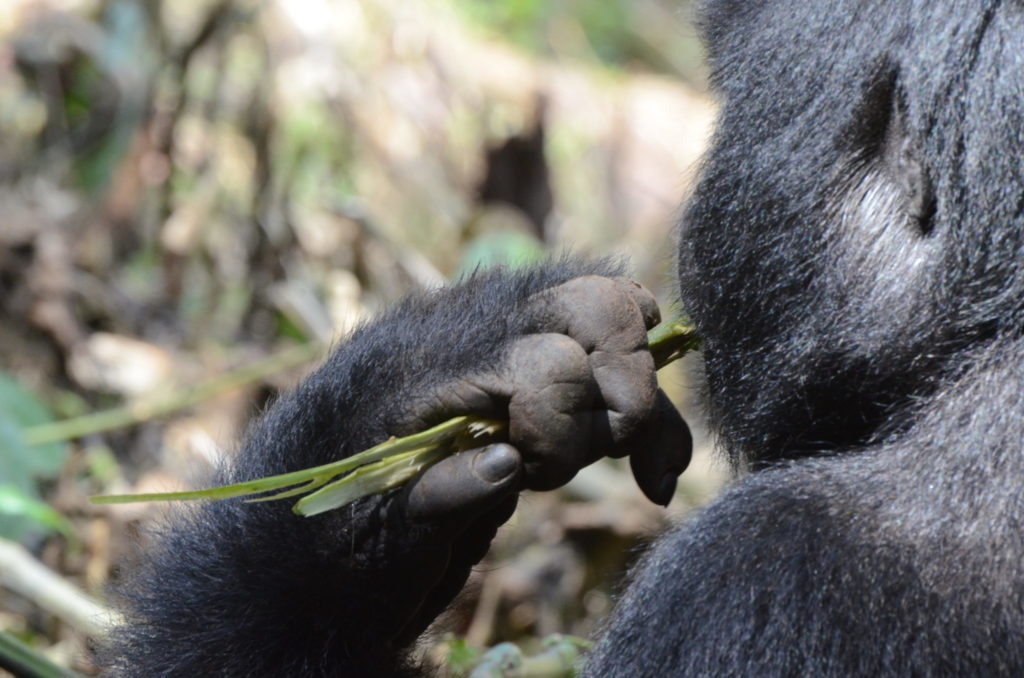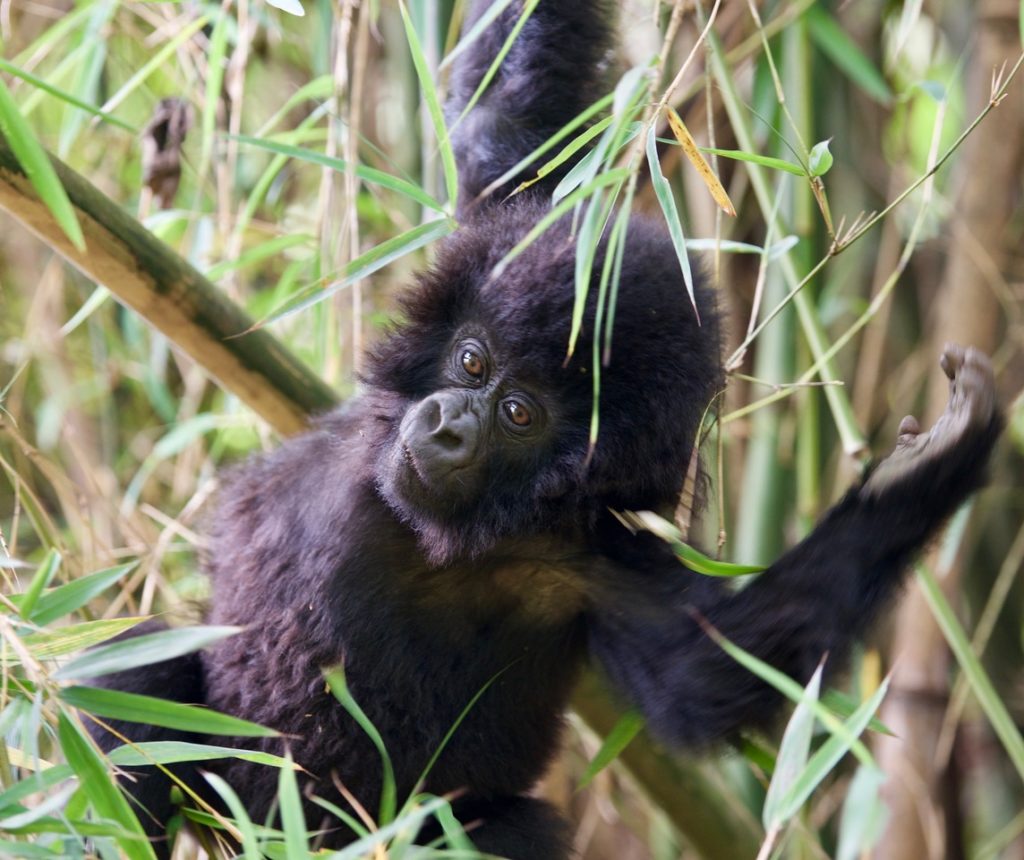Where and when to see mountain gorillas
Mountain gorillas can’t survive in captivity, so the only way you can see these critically endangered creatures is to observe them in the wild.
And because they live in remote, dense forests that can reach altitudes of 4,500 metres, it means you need to prepare for an epic hike. Trekking can be hard going and long.
There are only two populations of mountain gorillas left in the world.
One population lives in the Virungas, a chain of forested volcanoes that straddle the borders of Rwanda, Uganda and the Democratic Republic of Congo (DRC).
In Rwanda the gorillas live in Volcanoes National Park (Parc National des Volcans), while in Uganda their Virunga home is Mgahinga Gorilla National Park and in the Democratic Republic of the Congo it’s Virunga National Park.
The second population lives deep in the nearby Bwindi Impenetrable National Park in Uganda.
This near-impenetrable rainforest (also called “The Place of Darkness”) is a UNESCO World Heritage Site thanks to its incredible biodiversity. The mountain gorillas are its most famous residents by far.
Scroll down for more…

When it comes to deciding between Rwanda, Uganda or the Democratic Republic of Congo for your gorilla trekking adventure, there are pros and cons for all three countries. They all offer beautiful scenery, comfortable weather year-round and friendly guides and porters who will help make your gorilla safari unforgettable for all the right reasons.
Rwanda tends to offer “easier” trekking, as the gorillas often come down the mountain in search of young bamboo shoots. Your chances of a shorter hike are therefore higher. Treks are often longer and steeper in Uganda, which is a plus for avid hikers who relish a 12-hour trek, but not so much for everyone else!
On the other hand, permit costs in Uganda are cheaper than in Rwanda, and cheaper again in the DRC. In all countries though, revenue from permits provides important funding for gorilla protection and community support.
Another bonus about a gorilla safari is that you’re highly likely to come across other primates along the way, from L’hoest monkeys, blue monkeys and grey-cheeked mangabeys in Bwindi Impenetrable National Park, to golden monkeys – another endangered species – in Mgahinga Gorilla National Park.
Scroll down for more…

When to go
Gorilla trekking can be done all year round in Uganda, Rwanda and the DRC. From June to September and December to February there’s less rain about, making it the best time for hiking.
But don’t let the “long rains” of late March to early May or the short rains in November put you off. Yes, these are the wettest times and hiking is at its toughest.
But this is also the time when the gorillas venture down the mountains, to get closer to food sources and escape the cool weather, so hiking time is less. And all of the accommodations that we recommend include shoe cleaning as part of your stay, so don’t worry about the mud!
Just remember to pack your gardening gloves to protect your hands and have your favourite hiking socks packed.